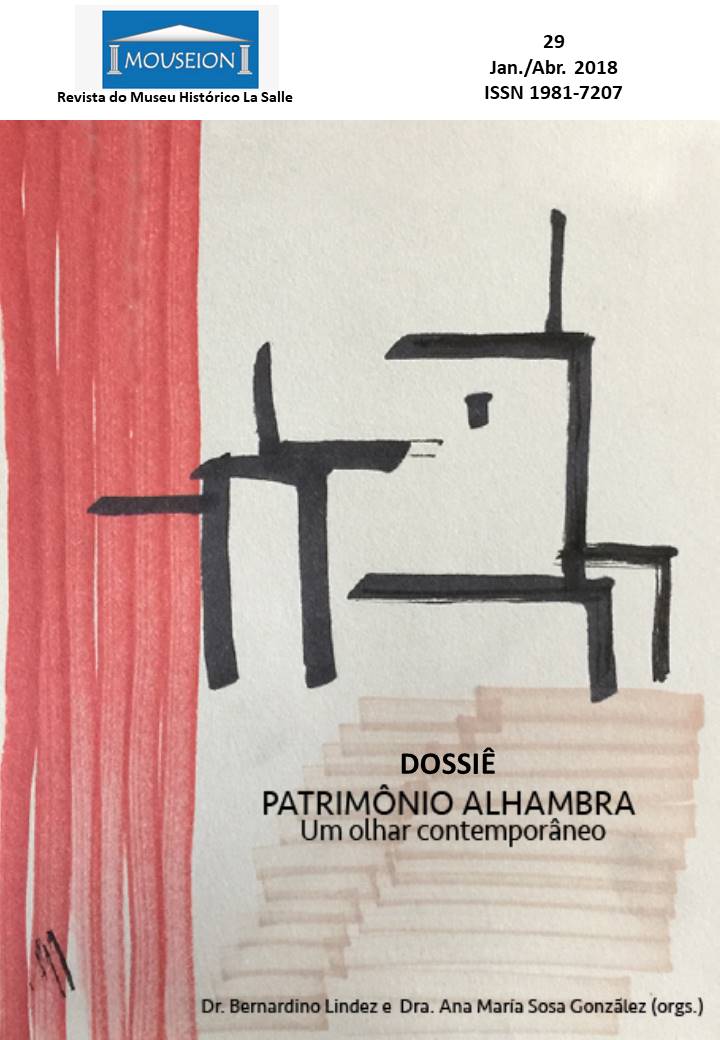The Alhambra: Perception, space and time
DOI:
https://doi.org/10.18316/mouseion.v0i29.4674Keywords:
Time, Alhambra, Muqarnas, Lantern Domes, Palace of the LionsAbstract
The lantern domes of the Salas de Dos Hermanas and Abencerrajes and the other three of the Sala de los Reyes express the passage of time evoking the circular movement of the firmament through the daily rhythm of the lights and shadows which filter from their windows; the three-dimensional structure of the muqarnas accentuates the perception of the turn through the faceted arrangement of its walls, which instantaneously tint their infinite planes with the sun’s path. Being essential the perceptive and phenomenological values that their stays bring, the time of the Alhambra must transcend this cyclical consideration that assumes existence as the mere succession of episodes that develop in the three dimensions of space. The time that the Alhambra demands arises from the reading of the monument as the sum of units that can be interpreted autonomously but irremediably exposed to the movement; rooms built at different times without a predetermined global scheme of composition, but which find in spatial experimentation a legible continuity from its capacity to compress the diverse historical epochs that have made it possible. The immediacy of the communications that today govern the functioning of a world dotted with instant images requires the reading of the Alhambra as a territory to explore and discover, as a guided expression of movement and, therefore, of time. But also the instability that the economic changes and the lack of cultural references provoke on a convulsed society forces us to understand the transcendent condition of the Alhambra as a product of successive additions that have been able to interpret all the preceding contemporaneity’s to endow it with temporal depth. It is the exposure to the time of the Alhambra and its capacity to fuse historical epochs from experimentation, which ratify today the validity of the principles that made it possible.
Downloads
Published
Issue
Section
License
Authors must submit their manuscripts to be published in this journal agree with the following terms:
Authors maintain the copy rights and concede to the journal the right of first publication, with the paper simultaneously licensed under the License Creative Commons attribution that permits the sharing of the paper with recognition of authorship and initial publication in this journal.
Since the articles are presented in this journal of public access, they are of free use, with their own attributions for educational and non-commercial purposes.


